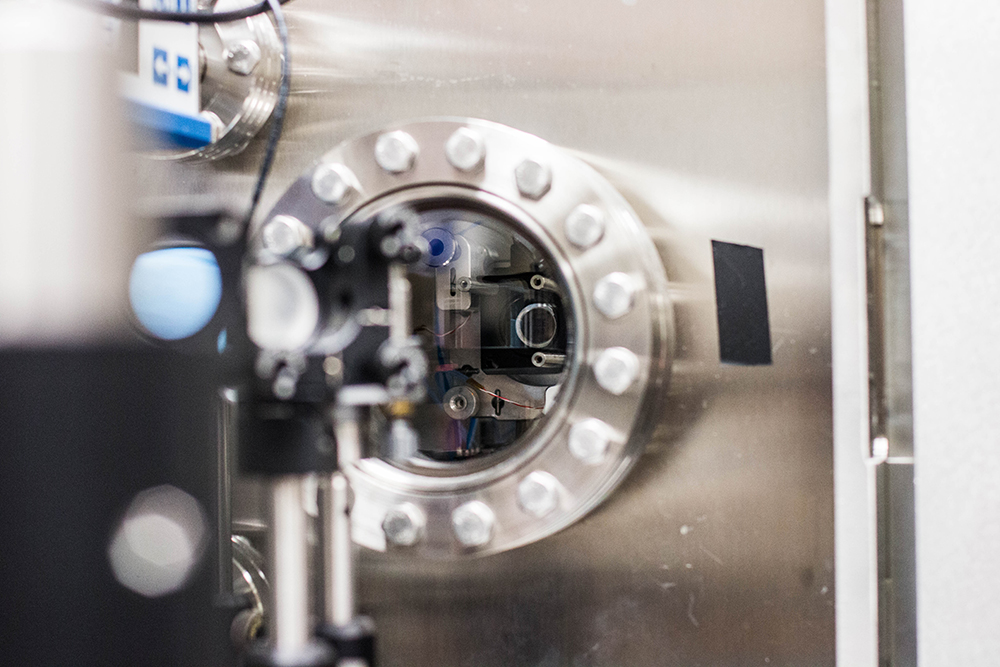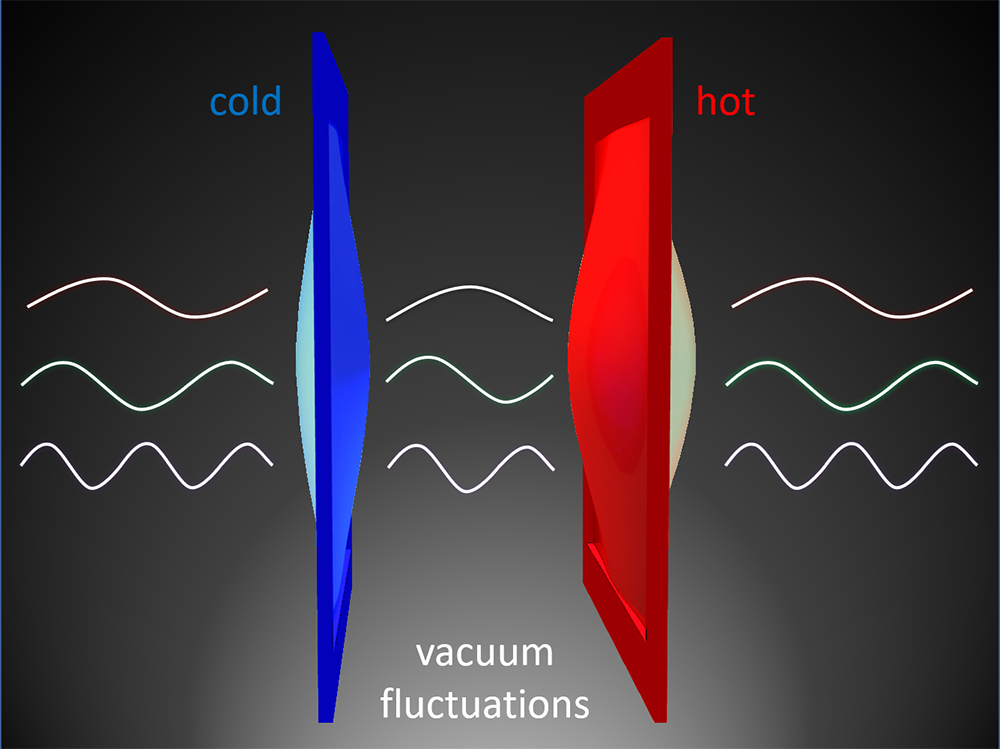May 2020 | Volume 21 No. 2
Filling the Vacuum
When Professor Xiang Zhang undertook his qualifying PhD examination at the University of Berkeley, California, in 1994, he was asked to explain how his examiner’s voice could be heard across the table. “I answered, ‘it is because your sound travels by vibrating molecules in the air.’ He further asked me, ‘what if we suck all air molecules out of this room? Can you still hear me?’ I replied no, because there would be no medium to vibrate.”
But times – and human knowledge – have changed. Two new studies guided by Professor Zhang and involving colleagues from Berkeley have shown that there is indeed much going on in vacuums.
The focus of their research is a recent theory based on quantum mechanics, which argues empty space cannot be truly empty because it still contains fluctuating electromagnetic waves that cannot be completely eliminated. These waves produce a force, called the Casimir effect, that connects two objects such that if one object starts shaking or oscillating, the nearby object will be set into motion even in a vacuum.
The scientists demonstrated for the first time that the Casimir effect can enable heat transfer, which has implications for high-speed computation and data storage. Furthermore, they proposed and demonstrated that the Casimir effect could also cause objects to repel from each other, which has implications for frictionless mechanics that are important for medical robots and quantum sensors.
Hot discovery
In the heat transfer study, Professor Zhang and his team overcame the significant hurdle of transmitting heat in a vacuum.
They engineered extremely thin, gold-plated silicon nitride membranes in a dust-free clean room, then placed two of these membranes a few hundred nanometres apart inside a vacuum chamber. The temperature of the membranes was precisely controlled and monitored using optic and electronic components. As predicted, when one membrane was heated up, the other warmed up, too – in other words, heat leapt from a hot membrane to a colder one inside the vacuum.
The size and design of the membranes were important in enabling this thermal transfer, as was the distance between them in order to rule out thermal radiation as the cause. The findings were published in Nature.
“Although this interaction is only significant at very short lengths – a few hundred nanometres – the implications could be profound for the design of computer chips and other nanoscale electronic components that are affected by heating issues that could limit their performance,” Professor Zhang said.

The team used highly sensitive optics to monitor the temperature of the silicon nitride membranes during the experiment.
(Courtesy of Violet Carter, UC Berkeley)

In the experiment, the team showed that heat energy, in the form of molecular vibrations, can flow from a hot membrane to a cold membrane even in a complete vacuum. This is possible because everything in the universe is connected by invisible quantum fluctuations.
(Courtesy of Zhang Lab, UC Berkeley)
No friction
In the study on frictionless mechanics, Professor Zhang and a separate team pushed scientific understanding even further. They proposed creating a ‘Casimir quantum trap’ without energy input by exploiting both attractive and repulsive forces – the attraction between two objects of the same material would be reversed at short distances and preserved at long ones without them ever touching each other.
The repulsion effect was confirmed in experiments similar to those for heat transfer, except in this case the objects were coated with Teflon. At short electromagnetic wavelengths Teflon’s low reactivity gave a repulsive force, while at longer waves gold’s higher-refractive index caused an attraction, thus creating the Casimir trap without using additional energy.
The finding is important for mechanical systems, which typically experience friction between objects such as gears and wheels that require costly maintenance and replacement. It also has implications for magnetic systems, such as Maglev trains, which have high energy demands.
“This quantum trap is totally passive and the trapping distance can be controlled by adjusting the thickness of the coating layer. The same principle can be applied to many other materials,” he said. The discovery was published in Science and selected as a top 10 Breakthrough of the Year 2019 by Physics World, a membership publication of the Institute of Physics in the United Kingdom.
Professor Zhang noted that these discoveries were just the beginning. The heat transfer effect is particularly resonant with his PhD examination experience. “Because molecular vibrations are also the basis of the sounds we hear, the discovery opens up the possibility that sounds could also travel through a vacuum. So I was wrong in my 1994 examination. Now, you can shout through a vacuum,” he said.
Because molecular vibrations are also the basis of the sounds we hear, the discovery opens up the possibility that sounds could also travel through a vacuum.

PROFESSOR XIANG ZHANG

